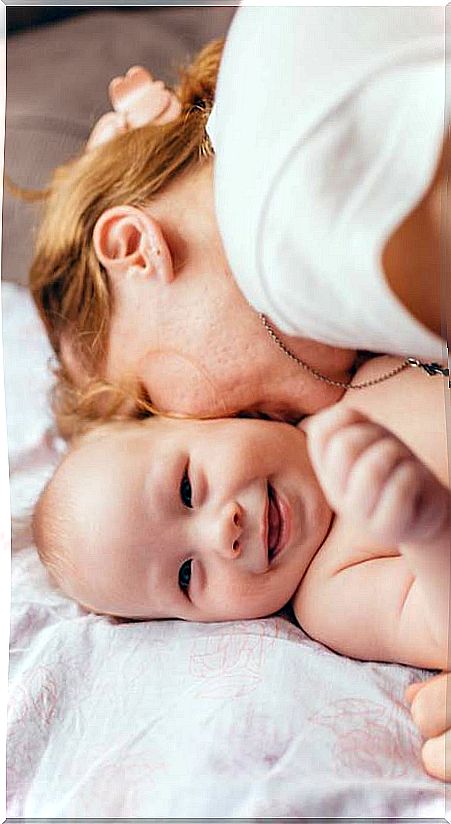“My Son’s Crying Connected Me To My Own Crying”
For many women, the psychological, emotional, and physiological processes involved in motherhood can be profoundly healing. It helped Sandra to be able to connect with the pain.

Having a child is a vital change, in every way. This incredible learning experience, if used well, can help us evolve enormously.
In the case of mothers, this process is particularly deep and intense. The months of pregnancy, the experience of childbirth and living together with your baby, involve such a combination of physical, hormonal and emotional changes that many women experience, as a result of becoming mothers, a radical transformation in their lives.
In my office, I always spend time talking and working on such special moments as pregnancy, childbirth and the puerperium. Depending on how these episodes have been lived, they can be very positive experiences or, also, highly traumatizing, as in the case of women who have suffered obstetric violence in their births.
Today I want to share with you the example of the vital revelation that Sandra experienced at the time of the birth of her first child.
Motherhood can connect us with our childhood
In one of her sessions, Sandra told me that, before becoming a mother, she could not bear the crying of children. The young woman was extremely uncomfortable hearing a baby or child cry, and more than once, she had had to leave a restaurant, a store or get off the bus, when she felt a little one begin to cry.
For years, this problem caused Sandra great concern. She had in mind to be a mother in the future, but did not know how she would react when she heard her baby cry.
However, at the time of the delivery of her first child, she had such an intense experience that it changed, forever, the way she perceives the crying of children.
She told me that as soon as her son was born and heard him cry, she too, without knowing why, began to sob. Little by little the intensity of his crying increased and at a time, in which it became uncontrolled, a bombardment of images and memories of his own childhood began to arrive.
In these flashes of her life, Sandra always found herself crying: alone in the nursery, the day she hit the kitchen table hard or groaning inconsolably in her crib.
All these images brought to his memory situations that he had forgotten many years ago.
In all these memories, invariably, the baby Sandra or girl, was alone, crying and neglected.
As soon as her baby started suckling, Sandra was able to stop crying. Although the scenes that she had remembered were still present in her mind, now that she had her baby at her breast, Sandra felt calm.
From those first moments of bond with her son, the young mother began to connect with her own story of ignored crying.
The mother’s brain can change after delivery
Sandra told me that, in her family, the idea that children should be allowed to cry to strengthen their lungs was common. She was never cared for and never felt anyone around to vent and cry to. As time went by, she became numb and, not only did she stop crying, but she began to feel the crying as a noise that made her nervous, she disliked it.
He was unable to connect with the pain of others because he was unable to connect with his own.
Luckily for Sandra, the hospital where she gave birth was very crowded that night and she was able to give birth calmly, without many interruptions or interventions. She stayed with her baby at all times and was quickly able to get him to suckle at her breast.
The intensity of the moment and the discharge of the hormones of labor, helped her to have that kind of regression live to connect the cry of her baby with her own.
This awareness is a process that goes from the chemical to the emotional and changes the mother’s brain forever. What Sandra was able to understand that day was integrated into her mind and helped her change her point of view about crying.
Your baby’s crying lasted only a few minutes. She stopped crying when she started suckling but, for Sandra, it was the trigger she needed to connect and release her sadness and loneliness. From then on, she was unable to ignore her son’s crying or that of any other child.









